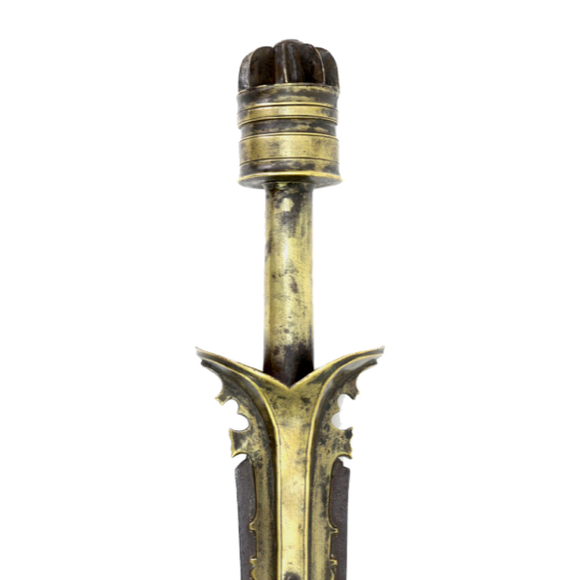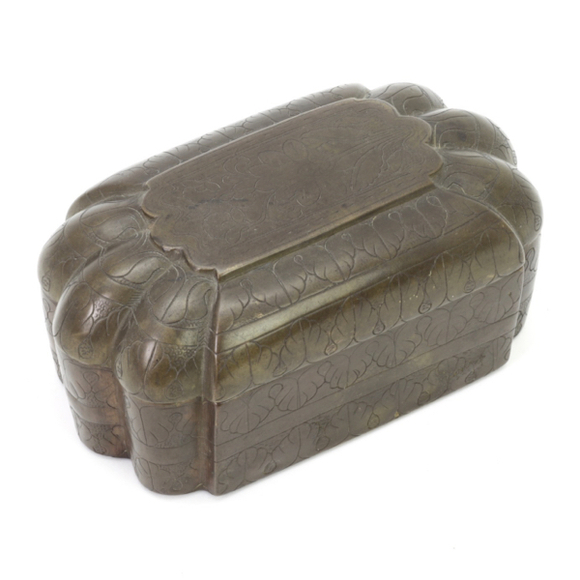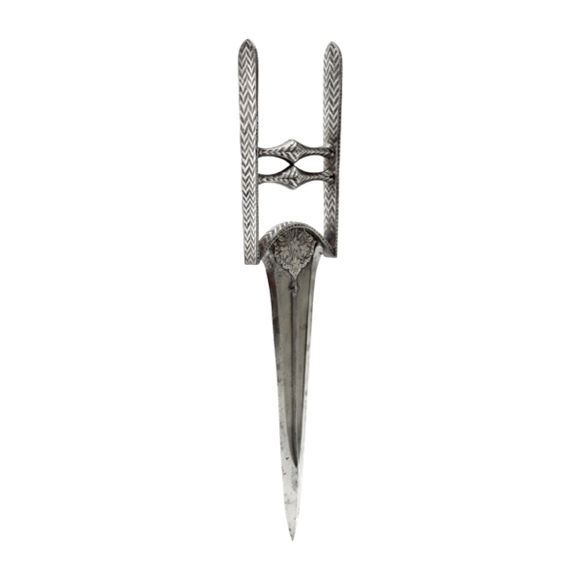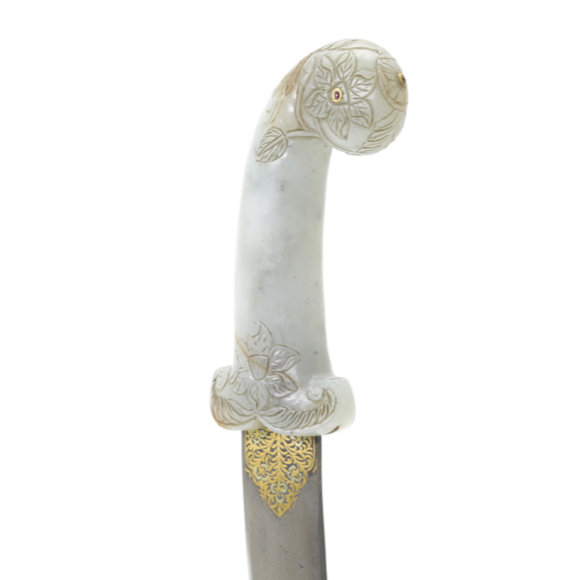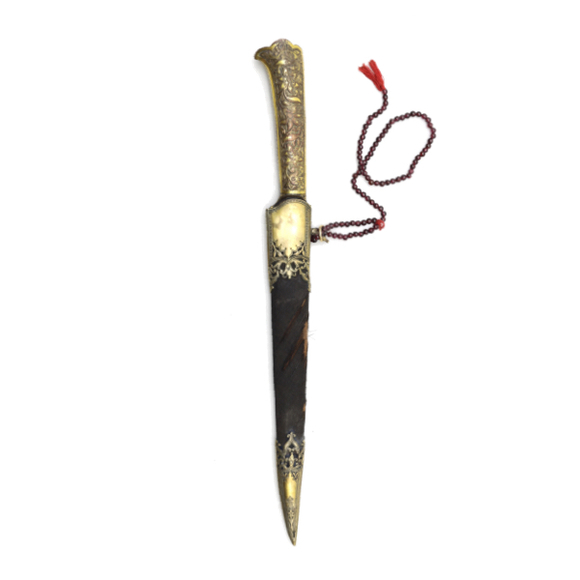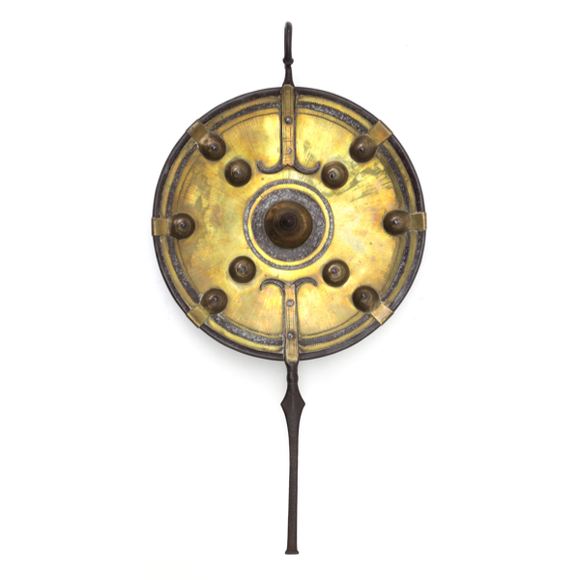Language: Hindi
Source: In common use
The khanda (खंडा) is an Indian sword. They typically have large, heavy, (partially) double edged blades with a widened upper section leading to an obtuse tip. Most fighting examples have considerable weight in their tip section for powerful cuts. The blades often have reinforcements in the form of a long langet at the base of the blade or reinforcing strips on either side of the blade.
In the 1600s the characteristic Hindu basket hilt was developed for increased hand protection. Before that, they had more orthodox Indian hilts. Such khanda are usually referred to as patissa.

An all-steel khanda with typical spoonbill shaped blade. 17th-18th century.
Sold by Mandarin Mansion in 2017.

A very good patissa. 16th century.
Mandarin Mansion collection.
The khanda represents one of the oldest forms of Indian swords, the present form is first seen on temple reliefs in Orissa dating back as early as the 2nd century A.D. Its name derives off the Sanskrit khaḍga meaning "breaker, divider, cutter, destroyer". Always strongly associated with Orissa, the sword did become popular all over India, from the Rajputs and Sikhs in the north to the Marathas of the Deccan and the Nairs in the south. In some of these cultures, it was an element of worship, symbolizing wisdom cutting through ignorance. As such the khanda features widely in religious art, not only in India but through the Himalayas, China, even into Japan.

A very fine khanda with pierced iron hilt. The blade with triangular tip represents a northern fashion.
Sold by Mandarin Mansion in 2016.
See:
Rawson, P.S.; The Indian Sword, Herbert Jenkings, London, 1968. Pages 6-8.
Stone, G.C.; A Glossary of the Construction, Decoration and Use of Arms and armor, 1934. Reprint by Dover, 1999, p. 352.
In period sources
"There is one, the 'Khanda' a double-edged sword, which is the object of special worship called 'Kharga Shapna' (the imprecation of the sword). The festival in which this imposing rite occurs is the 'Nauratra,' sacred to the god of war, and, according to Tod, of Scythic origin.
It commences on the 1st of the month Asin, and lasts for nine days. The ceremonies of the fourth day are thus described by Tod 'As on every one of the nine days, the first visit is to the ‘Chaughan,’ or Champ de Mars. The day opens with the slaughter of a buffalo. The Rana proceeds to the temple of Devi, where he worships 'the sword and the standard of the Raj Jogi, to whom, as the high priest of Siva, the god' of war, he pays homage, and makes offering of sugar and a garland of roses. A buffalo having been previously fixed to a stake near the temple, the Rana sacrifices him with 'his own hand by piercing him from his traveling throne with an arrow.'"-
-Lord Egerton of Tatton, 1896
Notes
1. Lord Egerton of Tatton: Indian and Oriental Arms and Armour. Dover Publications; Revised edition, 2002.

